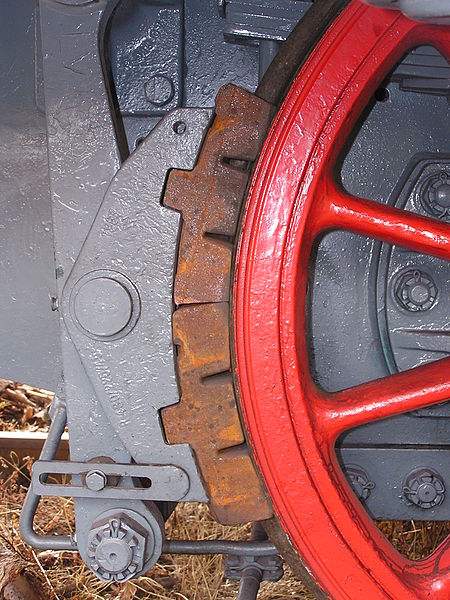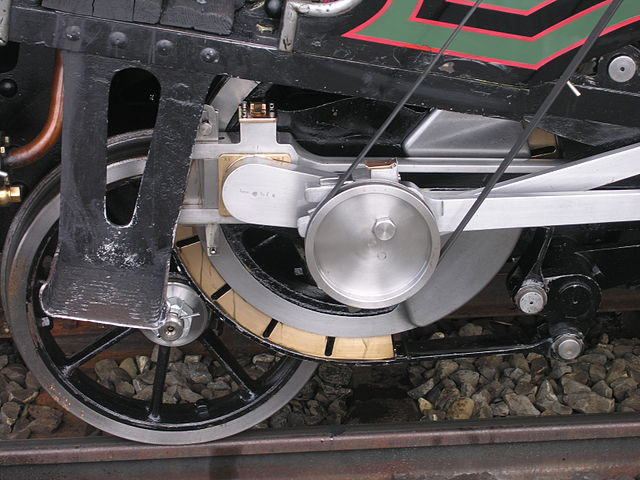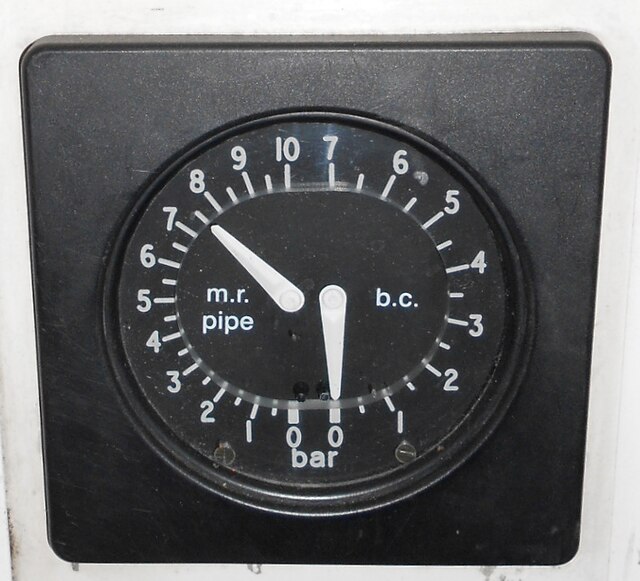A railway air brake is a railway brake power braking system with compressed air as the operating medium. Modern trains rely upon a fail-safe air brake system that is based upon a design patented by George Westinghouse on April 13, 1869. The Westinghouse Air Brake Company was subsequently organized to manufacture and sell Westinghouse's invention. In various forms, it has been nearly universally adopted.
Piping diagram from 1909 of a Westinghouse 6-ET Air Brake system on a locomotive
Control handle and valve for a Westinghouse air brake
Rotair Valve Westinghouse Air brake Company
1918 drawing of a triple valve
A railway brake is a type of brake used on the cars of railway trains to enable deceleration, control acceleration (downhill) or to keep them immobile when parked. While the basic principle is similar to that on road vehicle usage, operational features are more complex because of the need to control multiple linked carriages and to be effective on vehicles left without a prime mover. Clasp brakes are one type of brakes historically used on trains.
A traditional clasp brake: the cast iron brake shoe (brown) is pushed against the running surface (tyre) of the wheel (red), and is operated by the levers (grey) on the left.
A band brake fitted to an 1873 steam locomotive of the Rigi Railways
Controller valve from Rotair Valve Westinghouse Air Brake Company
Driver's duplex air brake gauge: The left needle shows the pressure of the main reservoir pipe supplying the train, the right that of the brake cylinder, in bar.







